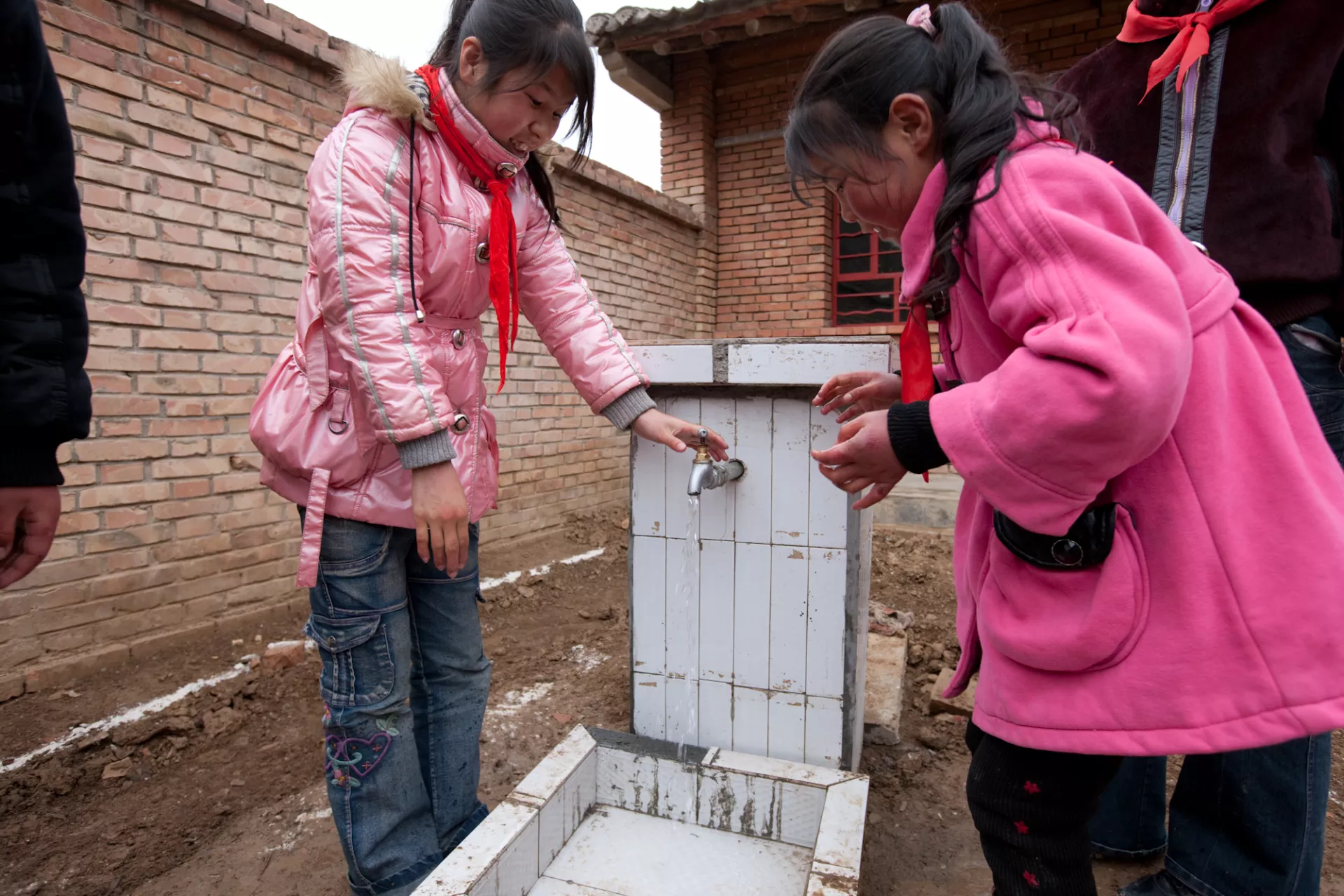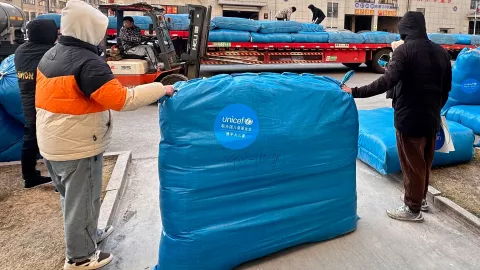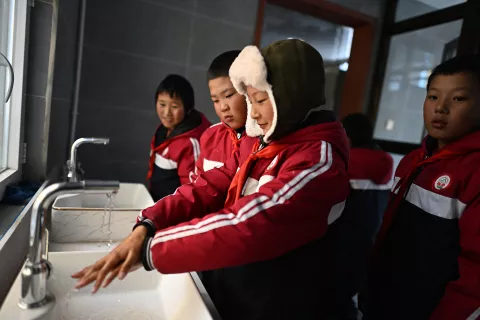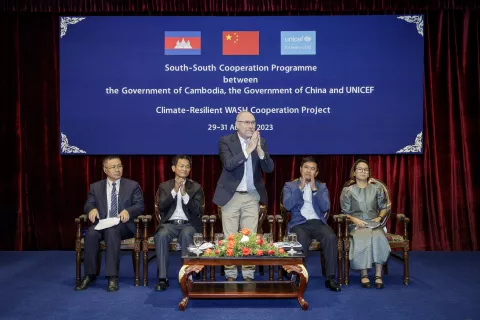UNICEF 'builds back better' to improve water supply in China quake zone
UNICEF 'builds back better' to improve water supply in China quake zone

- Available in:
- 中文
- English
On 12 May 2008, China was hit by its worst earthquake in three decades. A massive reconstruction effort has followed. In the run-up to the disaster's first anniversary, UNICEF has revisited hard-hit areas in Sichuan and Gansu provinces. Here is one of the resulting stories.
CAOCHUAN, China, 20 April 2009 – It was a chilly morning in early March, and Gou Xiumian, carrying a plastic bucket, walked to the water point in her courtyard and turned the tap.
For many people around the world, turning a tap to get water is not unusual. For Gou Xiumian, however, it was a luxury that she previously had seen only on TV.
Lacking access to safe water had always been a headache for Ms. Gou and her fellow villagers in Caochuan, located in northwest China's Gansu Province. Then a UNICEF-supported water supply system built in this mountainous village last year changed everything.
Memories of fetching water
The painful memory is still fresh. For generations, villagers had to walk two miles to a creek to fetch water, in a round trip that would take about an hour. To make matters worse, they would often have to wait, because it was the only water source for the whole village and the line was usually long.
He Gangyao, 37, said his mule was a great help in the past. While Mr. He could only carry 25 litres of water, the mule could haul 100 litres. But even so, for Mr. He, his family and their animals, 125 litres of water is barely enough for a day's use.
"I have always been very careful not to waste any water, because I know it is very precious," said Mr. He's daughter, He Tingting, 12.
'Building back better'
Caochuan village is in Xihe county, which neighbours southwest China's Sichuan Province and is populated largely by the Han, Hui and Tibetan ethnic groups. This is one of the areas severely hit by the earthquake that struck the region last May.
With annual precipitation averaging a mere 500 ml, the county also suffers from chronic drought. As of last December, 247 of Xihe's 384 villages lacked safe water; only 15.9 per cent of the county's population has running water at home.
As part of the strategy of 'building back better' in its extensive disaster-recovery efforts, UNICEF has been helping local governments build water supply systems in remote villages such as Caochuan in all the three provinces that were hit by the earthquake – Sichuan, Gansu and Shaanxi. The organization provides financial and technical support.
Benefits for schoolchildren
In Xihe alone, 39 such projects are being built or on the agenda. The one in Caochuan, initiated last September, brings water to each of the village's 270 households, as well as to Caochuan Primary School, where He Tingting is attending fifth grade.
"There is a temporary tap stand on our campus," she said, "During class breaks, when our hands get dirty, we will all go there to wash."
The temporary stand will soon be upgraded to a permanent one, bringing a promise of better memories to a new generation of village children.




